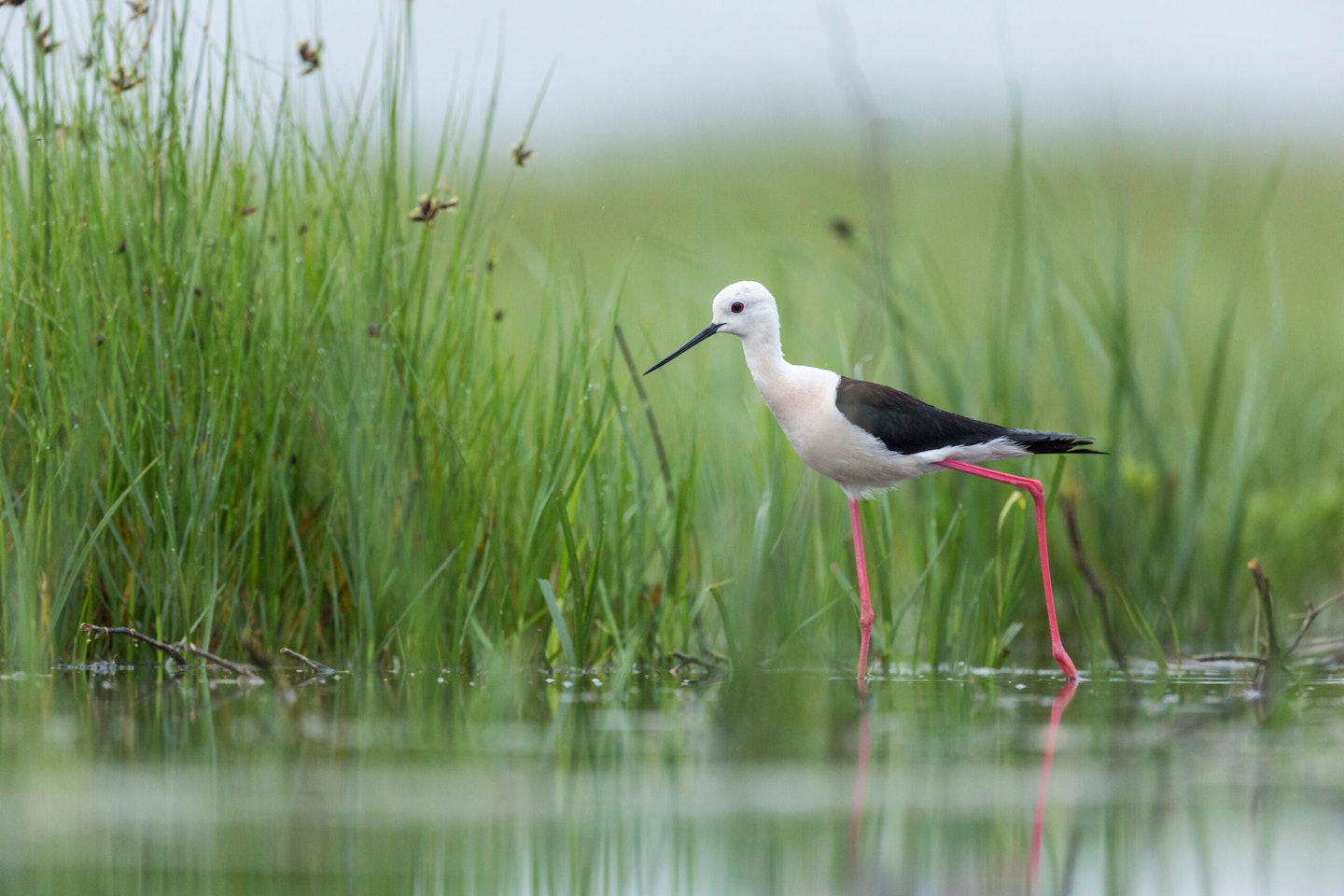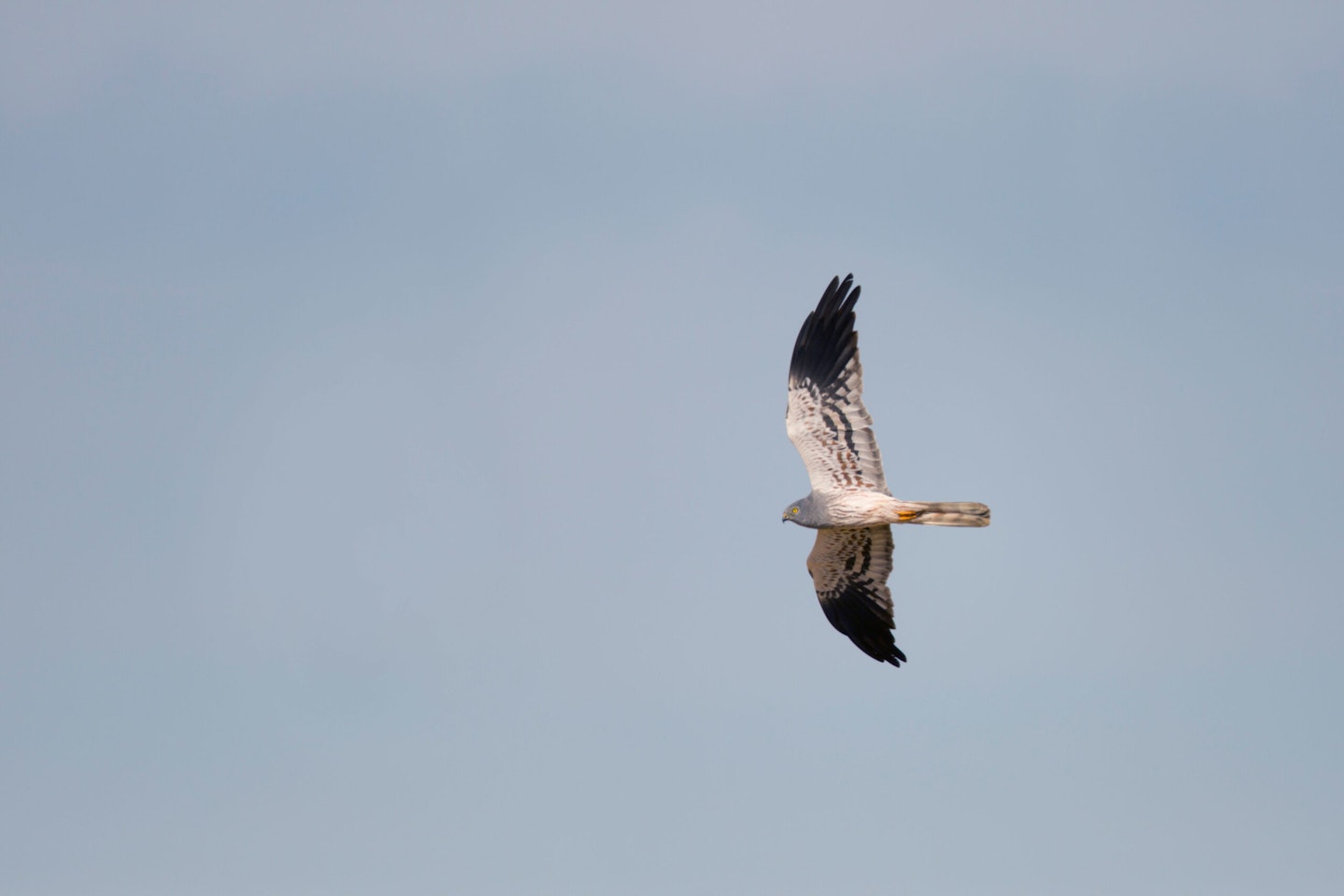June spans the turning of the year from spring into true summer. At the start, some birds are still heading north to breed, but by the end, failed breeders are returning. Here are five great birds to find this month.
Sanderling

Many of our common waders (or shorebirds, in American English) are arctic breeders. The Sanderling is one of these. Some 20,500 Sanderlings winter around our coast, preferring flat, sandy beaches, where they love to run along the tiny breaking wavelets in search of morsels. Though not a nesting bird in the UK, there are an estimated 40,000 individuals which pass through on passage, which includes late spring, into June. By this time, they will have very much changed from the ghostly pale winter plumage, through an elegant early spring plumage, flecked with gold, to the altogether richer, rufous-headed, rufous-chested, spangle-backed breeding attire. They are about the size of Dunlins, but shorter and straighter of bill and with a white belly, without a trace of the Dunlin’s belly, patch – making them look nice and rare, to the unwary. They are a scarce passing treat through inland sites on passage, as in the UK, these waders are true shorebirds.
Night Heron

Many European herons are very much on the rise. These days most of us think little of seeing a Little Egret, and even take Great White Egrets in our stride; while Cattle Egrets can be seen by the hundred in some places. We can hope that the still pretty rare Night Heron will also spread north and west to colonise our wetlands. They are great little herons. At this time of year, first- and second-summer birds may be found, as well as the more striking full adults. They have a habit of sitting around in trees during the day, and being more active towards night (the clue is in the name).
Black-winged Stilt

When many of us were young, a trip to southern Europe was essential to encounter this most extreme, elegant, cartoon-like exaggeration of a long-legged wading bird. They first nested in in our country in 1983, and in the last decade or so have shown genuine signs of colonisation. This is a truly unmistakable bird, if seen at all well. No other European bird has absurdly long red legs – which of course give the bird its stilt name.
Montagu’s Harrier

Though Black-winged Stilts may be in the process of colonising the UK, the Montagu’s Harrier seems to be going in the opposite direction. In the mid-1950s breeding numbers peaked at about 50 pairs, reducing to zero in the 1970s, then rising to another peak of 13 pairs in the 2000s, before reducing to zero again in recent years. Will this apparent ‘extinction’ as a UK nester be permanent? Only time will tell. In the meantime, these most falcon-like and elegant of harriers will still occur as scarce passage birds, found wandering each June. Adult males are distinctively coloured; ringtails can be mistaken for Hen Harriers or increasingly frequent (but still rare) Pallid Harriers. A photo would be useful to confirm ID…
Puffin

There are very few birds which nearly every adult in the UK could name at a glance. Most people could have a good chance of naming Kingfisher or Barn Owl or Robin, but surely the Puffin is close to the top of the charts of most well-known of British birds. Yet, most people will not have seen a Puffin in real life. Which is a great shame, as they are just as good (no, better) than they look on the telly. A curious quirk of evolution has made the Puffin as attractive to the human eye as to another Puffin (well, not quite, but you get the idea). And they are not difficult to see, as long as you visit a suitable place. This will usually a cliff top or similar, usually associated with a ‘seabird city’, be it on an offshore island, or a suitable mainland site, like Bempton Cliffs RSP, East Yorkshire, home of arguably, the country’s most accessible Puffins.
Subscribe to Bird Watching Magazine today and never miss an issue! Choose Print+ and you will receive 13 issues delivered straight to your door with FREE UK delivery plus digital access on your smart devices. View our latest offers here
